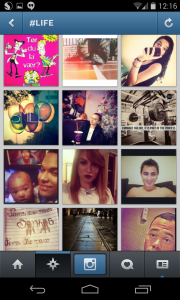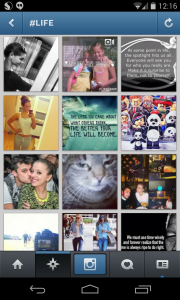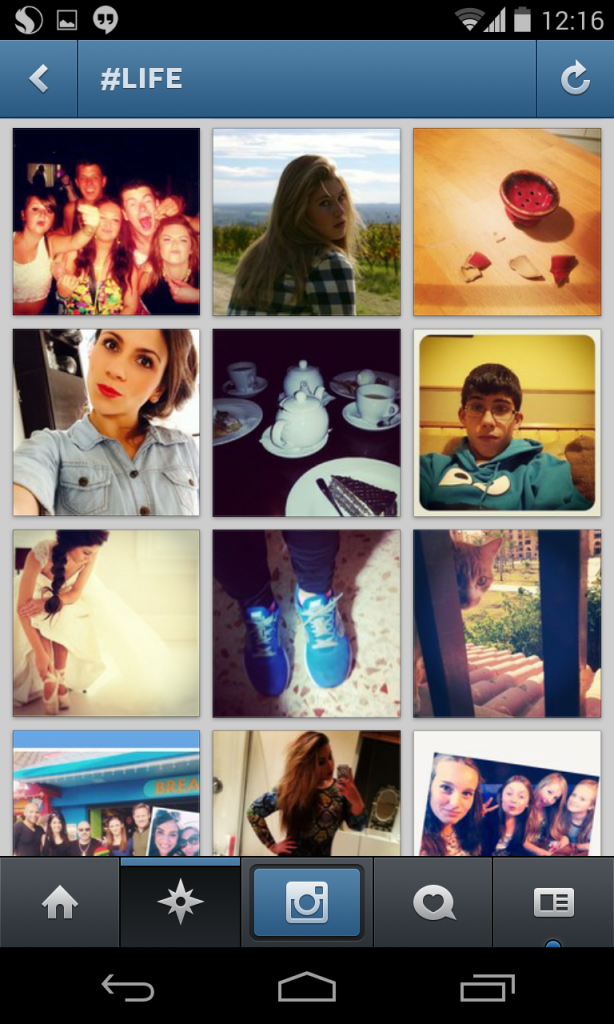1:2 Teller or Tale?
While we’ve established that the usage of online publications changes the dynamics of how stories are told by blurring the lines between the very formal act of publishing and the very informal act of orality, I want to push the topic further by looking at whether this phenomenon also blurs the lines of the teller and the tale. After all, in the age where almost everything is posted and everything can become a story, are we seeing the real person behind all the photos and posts, or just a tale of the imagination. Furthermore, with audiences gaining more power to choice what they wish to see through hyper-text and algorithms, is it even possible now for an audience to fully appreciate and experience the entirety of a story? With reference to J. Edward Chamberlin’s If this is your land, where are your stories, my leanings are that both questions point to a similar conclusion; it is probably too early, the change is too new, that we may not understand it until we are fully immersed into its digital grasp.
However, I would like to start with a quote from Chamberlin: “Except that people like Morgan are worried, for they rightly see that their world is changing…Anarchy replacing their hard-won culture.” (Chamberlin, 53) Could some of us, analyzing and critiquing these changes that we see, possibly be in the same stripes as Hugh Morgan?
As it was discussed in length in our lesson, publication and orality have very stark differences and criteria, and we have yet to conclusively decide which camp would a 140-character tweet, or a 5,000-character Facebook post fall into. However, my bigger concern lies in whether the velocity and casualness in which these stories are being distributed starts to fuse the story and its creator together into something fused at the core. On the publication end of the spectrum, the author is also the creator of the content – they write the words and hence is a projection of them whether the work is in first person or not. Similarly, a story teller also projects a story in manner of their choosing, and while we’ve discussed how a listener may influence the teller, the story teller is still very much the center-piece of creation. But as we enter an age where everything is posted, either by the creator personally, or an embarrassing photo by a friend from a night out, I feel that we may be approaching a time where the creators are no longer in control. No longer is the creator of their own stories the de-facto expert; audiences can piece together their own versions of someone else’s stories by simply shaping it themselves or gathering from other sources.

 With hyper-text being added into the mix, audiences can also pick and choose what type of stories they want to absorb and make judgments for themselves in what they want to take away from the story, a right that was previously reserved solely for the writers, and only very loosely let go by orality. It must be frightening to learn that your stories no longer belonged to you and no longer look like the ones you told.
With hyper-text being added into the mix, audiences can also pick and choose what type of stories they want to absorb and make judgments for themselves in what they want to take away from the story, a right that was previously reserved solely for the writers, and only very loosely let go by orality. It must be frightening to learn that your stories no longer belonged to you and no longer look like the ones you told.
While one of Chamberlin’s most striking phrases was the question of “Do we believe the singer or the song, the teller or the tale?” (Chamberlin 21), I think that with online distribution pushing the boundaries almost beyond our sight, a more appropriate question would be, are we ourselves the teller or the tale?
Chamberlin, Edward. If This is Your Land, Where are Your Stories? Finding Common Ground. Toronto, 2003, print.
Social Media and Life: How teens view their digital lives. Common Sense Media, Summer 2010, report, accessed January 16th 2014 <http://www.commonsensemedia.org/sites/default/files/research/socialmediasociallife-final-061812.pdf>
Instagram search term “Life” screenshots, accessed January 17th 2014, mobile app.

Edward, I think this is a really interesting take on the question of new media and story, especially your reframing of the question at the end (are we the teller or the tale?). And I think Chamberlain lends some credence to this.
I had been thinking about this idea when I read the line “common ground…is a state of mind in which we accept that the categories of reality and the imagination are like the categories of Them and Us” (Chamberlain, “If This is Your Land…”, 239). I spent a bit too much time trying to create some kind of math equation to ‘prove’ that we are stories. This went about as well as any of my attempts at math (http://www.pinterest.com/pin/200339883394174796/).
On common ground we find that We and They are not just fluid, but also inhabit the same space and moment, just like reality and imagination do. And if stories are at the intersection of reality and imagination, stories may also reside at the intersection of Us and Them, which is to say that stories may reside where we are (‘we’ being lower-case ‘us’). Can we then say that we are stories? I’m not trying to just restate your point, but trying to find if Chamberlain would agree.
And I think intuitively this makes sense. The performance of a song is really the expression of that artists’ entire live – their inflection of one word, they reason they move just so on this or that note, etc.
But maybe I’m stretching with respect to Chamberlain.
Thank you Edward 😉